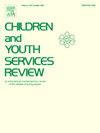Community leadership in system transformation: A realist review of strategies for effective partnership between communities of color and public systems impacting children and families
IF 2.4
2区 社会学
Q1 FAMILY STUDIES
引用次数: 0
Abstract
The child welfare system in the U.S. is long overdue for a reimagination. To bridge the gap between what families say they need to thrive and what child welfare provides, the system must build a new relationship with community—one where residents are valued as collaborators and are supported in taking the lead. A team from Chapin Hall conducted a realist evidence review (Paré et al., 2015) to inform this shift toward community leadership. We focused on public system partnerships with Black and non-Black communities of color to shape policies, programs, and practices impacting children and families. Using a modified grounded theory approach, we analyzed 35 empirical publications on 32 unique projects. We supplemented that evidence with six longitudinal case studies (Bowen, 2009; Morgan & Nica, 2020) and conversations with 10 key informants.
From these sources, we distilled four sets of strategies for forming and sustaining equitable system change partnerships with Black and non-Black communities of color: 1) adopting anti-racist and strengths-based approaches to working with community, while continuously confronting power and positionality; 2) creating inclusive and flexible opportunities for community leadership; 3) investing in community partners’ personal agency, skills, and capacity for collective action; 4) and embedding community leadership in system decision making through partnership infrastructure and long-term funding.
系统转型中的社区领导:对有色社区和影响儿童和家庭的公共系统之间有效伙伴关系战略的现实主义审查
美国的儿童福利制度早该重新构想了。为了弥合家庭认为他们需要茁壮成长和儿童福利所能提供的之间的差距,该系统必须与社区建立一种新的关系——在这种关系中,居民被视为合作者,并被支持发挥带头作用。Chapin Hall的一个团队进行了现实主义证据审查(par等人,2015),以告知这种向社区领导的转变。我们将重点放在与有色人种黑人和非黑人社区的公共系统伙伴关系上,以制定影响儿童和家庭的政策、项目和实践。使用改进的扎根理论方法,我们分析了32个独特项目的35个实证出版物。我们用六个纵向案例研究补充了这些证据(Bowen, 2009;摩根,Nica, 2020)以及与10名关键线人的对话。从这些来源中,我们提炼出四套策略,用于与有色人种的黑人和非黑人社区形成和维持公平的制度变革伙伴关系:1)采用反种族主义和基于优势的方法与社区合作,同时不断面对权力和地位;2)为社区领导创造包容和灵活的机会;3)投资于社区合作伙伴的个人能动性、技能和集体行动能力;4)通过伙伴关系基础设施和长期资助,将社区领导纳入系统决策。
本文章由计算机程序翻译,如有差异,请以英文原文为准。
求助全文
约1分钟内获得全文
求助全文
来源期刊

Children and Youth Services Review
Multiple-
CiteScore
6.30
自引率
6.10%
发文量
303
期刊介绍:
Children and Youth Services Review is an interdisciplinary forum for critical scholarship regarding service programs for children and youth. The journal will publish full-length articles, current research and policy notes, and book reviews.
 求助内容:
求助内容: 应助结果提醒方式:
应助结果提醒方式:


